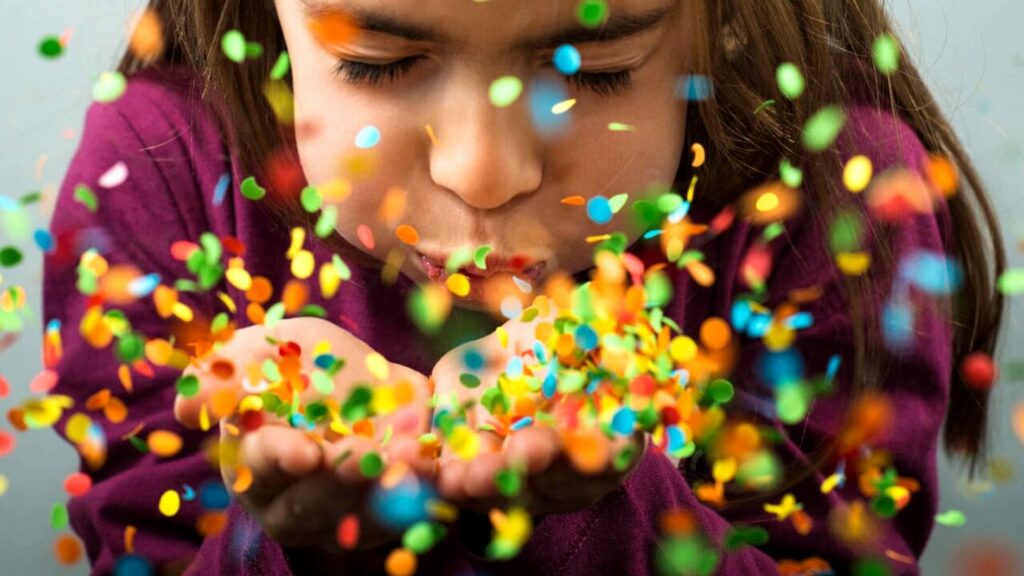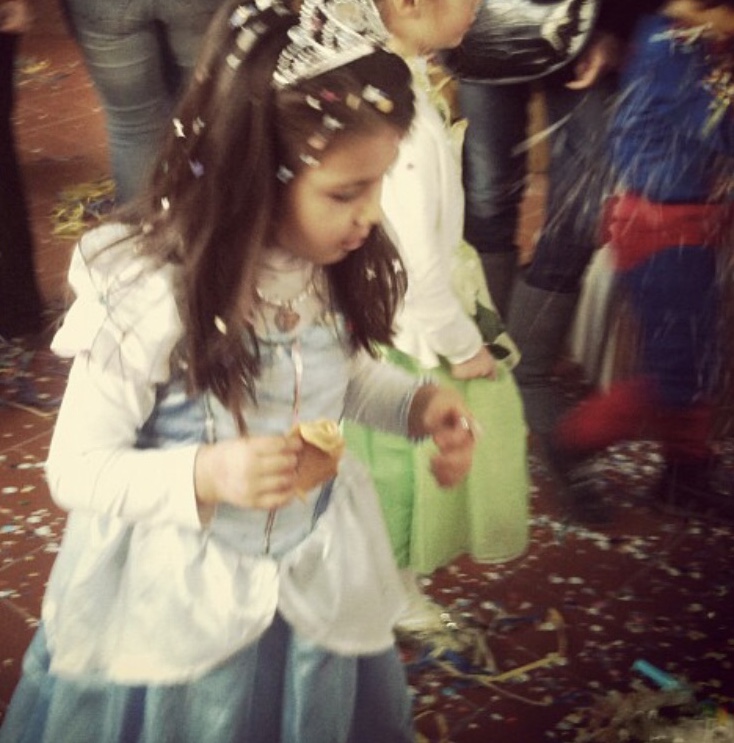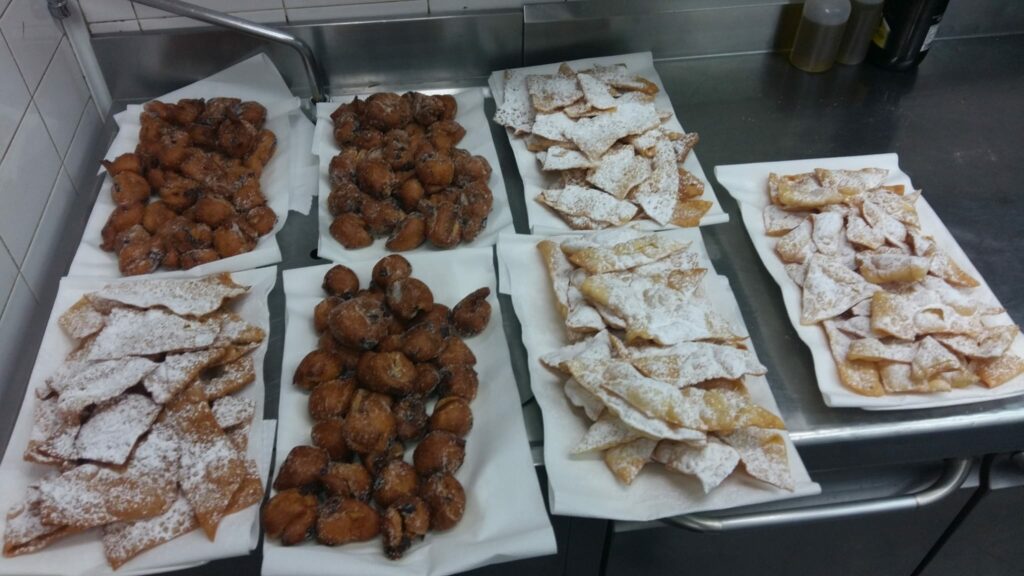Filastrocca Italiana, Italian Nursery Rhyme (translation mine)
Buon giorno, Febbraio,
Dear February, hello,
che mangi frittelle
you, that eat fritters
che butti nell’aria
and up to the sky
coriandoli e stelle!
confetti and stars you throw!

In my house, Carnevale is serious business. For many years, however, I routinely forgot about it. As a US expat in Italy, Carnevale was always unexpected, and it was only once I had a child that I finally and fully understood its importance and place in Italian culture.
As an American, I felt that with Halloween, a holiday now happily adopted into the Italian mainstream, I had given my all, and Carnevale never felt like it belonged to me because it simply wasn’t part of my childhood. In fact, it always took me by surprise, and I often found myself scrambling last minute since I hadn’t really factored it into the parenting experience in Italy. Once I was in the thick of it, however, I embraced the ritual and grew to love and look forward to it.
When Giada was small, February was a very busy social month. It involved intricate costumes, parties, parades, floats, and “confetti and stars” on the streets for weeks, well after Mardi Gras, often past Easter.

Much more than a tradition, each year Carnevale becomes an integral part of the lives of Italians: it impacts the way they eat, socialize, celebrate, observe their faith, and present or masquerade themselves. It epitomizes the spectacle of Italian culture and Italian culture as spectacle.
It is also very much about the food, especially the scrumptious confections that abound in pasticcerie, forni, and people’s homes (mine included). I don’t have a sweet tooth, but my partner does, and he also hails from the Veneto where Carnevale is so important that the schools close for two days in observance of the holiday.
There are far too many incredible places in Italy to experience Carnevale and its magic to list here, so I’ll narrow in on one aspect of just one place and take you on a virtual tasting to Venice, whose Carnevale is among the most famous in the world.
When you have a chance, do check out Italy’s many Carnevale traditions and locales. You can already understand the diversity and richness of the country’s Carnival culture by looking at the many names for the same sweet fried pastry dough you find across the country during the month of February: frappe, cenci, bugie, frappole, frittole, and crostoli.

Here is Chef Luca’s family recipe for galani, as they are called in Venice and the Veneto.
I Galani di Nonna Bruna
Ingredients
2 eggs, large and fresh
Sugar, half the weight of the eggs
Butter, same weight as the sugar, softened
Half a cup of moscato wine
Flour, a occhio (see below)
Mix eggs in a bowl, add the sugar, butter, and then the wine. Add the flour, a little at a time, and mix until smooth (it should resemble tagliatelle dough). Knead dough until it is shiny and bouncy.
Cover the dough with a clean dish towel and let it rest at room temperature for at least a half an hour.
Roll it out into very thin, 2-3 mm thick, 4×10 cm rectangles with a dough or pasta wheel.
Fry at 160-70 °C in sunflower or peanut oil until golden brown.
Lay out on parchment paper to absorb excess oil. Once cool, dust with powdered sugar.

